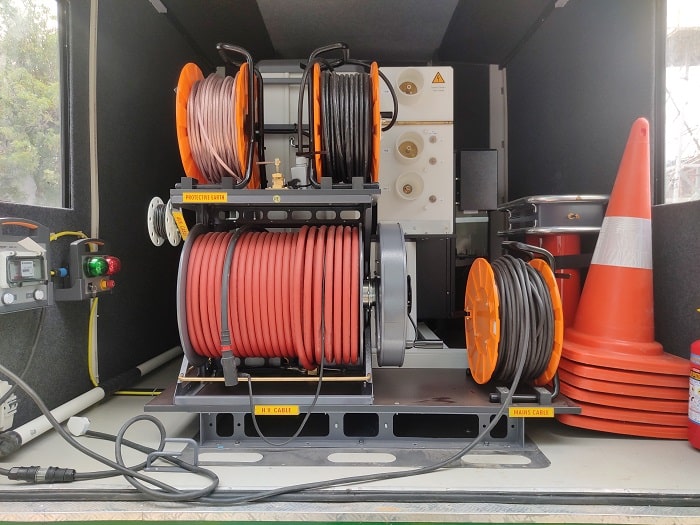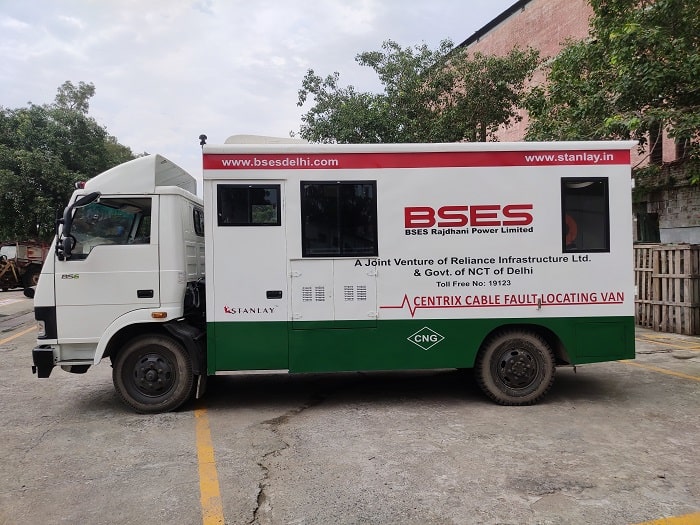Application requirement:
State of the art - advanced power cable fault locating system, to cater to its entire range of power cables from low voltage cables to 66kV or higher.
In addition, capability to test cables for possible failures and weak joints at the time of commissioning new cables and also the ability to detect possible failures before they actually happen
Solution:
BSES Delhi uses Centrix 2.0 Power Cable fault locating vehicle mounted system, the world's most powerful and advanced cable fault locating system for the cable diagnosis.
Megger Centrix 2.0, the worlds most powerful and advanced cable fault locating system.
Centrix 2.0 is a fully automatic cable test van system for fast, easy and non-destructive fault location.
Equipped with the latest generation of cable diagnostics in conjunction with powerful VLF testing technology, Centrix 2.0 makes it possible to perform standard-compliant cable testing with accompanying partial discharge diagnosis.

The Centrix 2.0 system was provided with the widest range of pre locating methods for meeting a variety of fault locating requirements :
- Passive ARC Reflection, method: ARM/SIM : with active low voltage TDR pulse adjustable, for shorter cables, typically 5km.
- Active ARC Reflection for long cables >5km, method: ARM with double surge , with a higher voltage TDR pulse, Reasoned by the active arc stabilisation by using an high voltage TDR pulse, even faults on long cables can be detected.
- Current decoupling , method: current impulse/ICE : Typically used for long PILC cables. In this method, TDR is used in a passive mode as a transient recorder of the current on the HV return after the flashover at the fault location, which was initiated by the surge generator.
4. Passive Voltage Decoupling , method: voltage decay , Typically for long PILC cables, TDR used in a passive mode as a transient recorder of the voltage on the HV return after the flashover at the fault location, which was initiated by the HV DC source.
5. Active Voltage Decoupling , method: voltage decay with double surge . TDR used in an active by sending a TDR pulse out after the flashover at the fault location, was initiated by the HVDC source and extended by additional energy from discharging a special capacitor, followed by the ARC reflection method. The advantage of this method compared to the passive voltage decoupling is a TDR fault trace that looks identical to the ARC reflection method, providing more information like start and end of cable and potentially splices.
6. TDR-Burn Mode, method: combination of ARM & burning to reduce the stress occurred during conventional burning.
Surge steps: 0 ... 4 / 8 / 16 / 32 kV
For ARM/SIM, ICE, ARM with double surge method.
7. Extended arc reflection method up to 80 kV with automatic fault detection.
The system was further provided with VLF for Withstand testing and Partial Discharge, diagnostic techniques.





.jpg)
